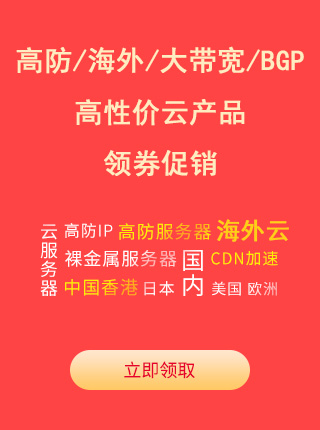Python中的JSON如何用,字符串怎样转换为JSON
Admin 2022-06-21 群英技术资讯 808 次浏览
 这篇文章给大家分享的是Python中的JSON如何用,字符串怎样转换为JSON。小编觉得挺实用的,因此分享给大家做个参考,文中的介绍得很详细,而要易于理解和学习,有需要的朋友可以参考,接下来就跟随小编一起了解看看吧。
这篇文章给大家分享的是Python中的JSON如何用,字符串怎样转换为JSON。小编觉得挺实用的,因此分享给大家做个参考,文中的介绍得很详细,而要易于理解和学习,有需要的朋友可以参考,接下来就跟随小编一起了解看看吧。什么是 JSON
JSON 是 JavaScript Object Notation(JavaScript 对象标记)的缩写。
它是一种数据格式,用于为 Web 应用程序存储和传输信息。
JSON 最初来自 JavaScript 编程语言,但它并不仅仅局限于一种语言。
大多数现代编程语言都有用于解析和生成 JSON 数据的库。
在哪里使用JSON
JSON 主要用于在服务器和客户端之间发送和接收数据,其中客户端是网页或 Web 应用程序。
在 Web 应用程序通过网络连接时使用的请求-响应周期中,这是一种更可靠的格式。与复杂且不太紧凑的 XML 相比,JSON 是使用得更多的格式。
基本的 JSON 语法
在 JSON 中,数据以键值对的形式写入,如下所示:
"first_name": "Katie"
数据用双引号括起来,键值对用冒号分隔。
可以有多个键值对,每个键值对之间用逗号分隔:
"first_name": "Katie", "last_name": "Rodgers"
上面的例子展示了一个对象,一个多个键值对的集合。
对象在花括号内:
{
"first_name": "Katie",
"last_name": "Rodgers"
}
你还可以使用 JSON 创建数组,即值的有序列表。在这种情况下,数组包含在方括号内:
[
{
"first_name": "Katie",
"last_name": "Rodgers"
},
{
"first_name": "Naomi",
"last_name": "Green"
},
]
// or:
{
"employee": [
{
"first_name": "Katie",
"last_name": "Rodgers"
},
{
"first_name": "Naomi",
"last_name": "Green"
},
]
}
//this created an 'employee' object that has 2 records.
// It defines the first name and last name of an employee
如何在 Python 中处理 JSON 数据
包含 JSON 模块
要在 Python 中使用 JSON,首先需要在 Python 文件的顶部包含 JSON 模块。这是 Python 内置的,是标准库的一部分。
因此,假设你有一个名为 demo.py 的文件。在顶部,你将添加以下行:
import json
使用 json.loads() 函数
如果你的程序中有 JSON 字符串数据,如下所示:
#include json library
import json
#json string data
employee_string = '{"first_name": "Michael", "last_name": "Rodgers", "department": "Marketing"}'
#check data type with type() method
print(type(employee_string))
#output
#<class 'str'>
你可以使用 json.loads() 函数将其转换为 Python 中的 JSON。
json.loads() 函数接受有效字符串作为输入并将其转换为 Python 字典。
这个过程叫作反序列化——将字符串转换为对象。
#include json library
import json
#json string data
employee_string = '{"first_name": "Michael", "last_name": "Rodgers", "department": "Marketing"}'
#check data type with type() method
print(type(employee_string))
#convert string to object
json_object = json.loads(employee_string)
#check new data type
print(type(json_object))
#output
#<class 'dict'>
然后,你可以访问每个单独的项目,就像使用 Python 字典时一样:
#include json library
import json
#json string data
employee_string = '{"first_name": "Michael", "last_name": "Rodgers", "department": "Marketing"}'
#check data type with type() method
print(type(employee_string))
#convert string to object
json_object = json.loads(employee_string)
#check new data type
print(type(json_object))
#output
#<class 'dict'>
#access first_name in dictionary
print(json_object["first_name"])
#output
#Michael
让我们再举一个例子:
1. 取一些 JSON 字符串数据
import json
#json string
employees_string = '''
{
"employees": [
{
"first_name": "Michael",
"last_name": "Rodgers",
"department": "Marketing"
},
{
"first_name": "Michelle",
"last_name": "Williams",
"department": "Engineering"
}
]
}
'''
#check data type using the type() method
print(type(employees_string))
#output
#<class 'str'>
2. 使用 json.loads() 函数将字符串转换为对象
import json
emoloyees_string = '''
{
"employees" : [
{
"first_name": "Michael",
"last_name": "Rodgers",
"department": "Marketing"
},
{
"first_name": "Michelle",
"last_name": "Williams",
"department": "Engineering"
}
]
}
'''
data = json.loads(employees_string)
print(type(data))
#output
#<class 'dict'>
3. 读取数据
import json
employees_string = '''
{
"employees" : [
{
"first_name": "Michael",
"last_name": "Rodgers",
"department": "Marketing"
},
{
"first_name": "Michelle",
"last_name": "Williams",
"department": "Engineering"
}
]
}
'''
data = json.loads(employees_string)
print(type(data))
#output
#<class 'dict'>
#access first_name
for employee in data["employees"]:
print(employee["first_name"])
#output
#Michael
#Michelle
总结
关于“Python中的JSON如何用,字符串怎样转换为JSON”就介绍到这了,如果大家觉得不错可以参考了解看看,如果想要了解更多,欢迎关注群英网络,小编每天都会为大家更新不同的知识。

免责声明:本站发布的内容(图片、视频和文字)以原创、转载和分享为主,文章观点不代表本网站立场,如果涉及侵权请联系站长邮箱:mmqy2019@163.com进行举报,并提供相关证据,查实之后,将立刻删除涉嫌侵权内容。
猜你喜欢
-
用Python怎么实现动态绘制一圈小爱心的效果
这篇文章主要介绍了教你利用Python+Turtle绘制简易版爱心表白,文中有非常详细的代码示例,对想要和男朋友或者女朋友表白的小伙伴们有很大帮助哟,需要的朋友可以参考下
-
如何学习Python中哈希表使用如何,有哪些知识点
哈希表或称为散列表,是一种常见的、使用频率非常高的数据存储方案。本文将站在开发者的角度,带着大家一起探究哈希的世界,感兴趣的小伙伴可以跟随小编一起学习一下
-
Python多层装饰器与有参装饰器是什么
本章内容概要1.多层装饰器2.有参装饰器3.递归函数4.算法(二分法)本章内容详解1.多层装饰器1.1什么是多层装饰器多层装饰器是从下往上依次执行,需要注意的是,被装饰的函数名所指代的函数是一直被装饰器中的内层函数所取代。1.2语法糖的功能会自动将下面紧挨着的函数名...
-
Python format的基本用法和进阶用法是什么
fotmat作为Python的的格式字符串函数,主要通过字符串中的花括号{},来识别替换字段,从而完成字符串的格式化,下面这篇文章主要给大家介绍了关于python中format用法的相关资料,需要的朋友可以参考下
-
Python怎样实现图像分割处理,步骤及代码是什么
这篇文章主要介绍了Python 第三方opencv库实现图像分割处理,文章围绕主题展开详细的内容介绍,具有一定的参考价值,需要的小伙伴可以参考一下
成为群英会员,开启智能安全云计算之旅
立即注册关注或联系群英网络
7x24小时售前:400-678-4567
7x24小时售后:0668-2555666

24小时QQ客服

群英微信公众号
CNNIC域名投诉举报处理平台
服务电话:010-58813000
服务邮箱:service@cnnic.cn
投诉与建议:0668-2555555
Copyright © QY Network Company Ltd. All Rights Reserved. 2003-2020 群英 版权所有
增值电信经营许可证 : B1.B2-20140078 粤ICP备09006778号 域名注册商资质 粤 D3.1-20240008



